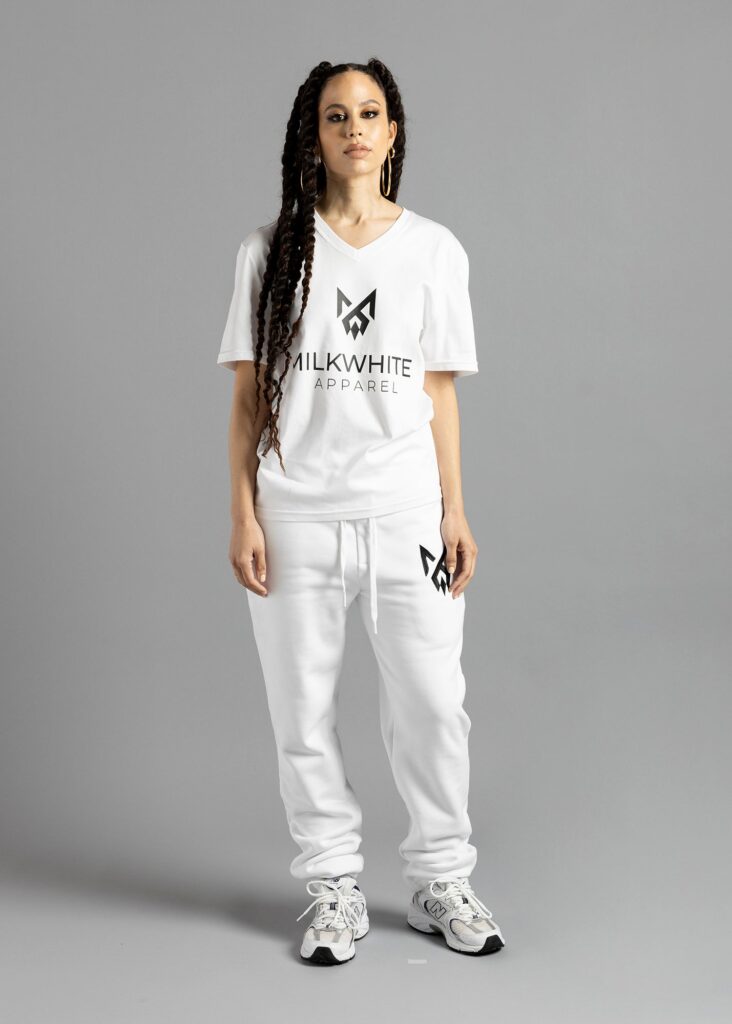The Rise of Sustainable Clothing: Why It’s Time to Rethink Your Wardrobe
With environmental concerns on top of agendas worldwide, today is the time for change in one of the most highly visible sectors: fashion. The clothing industry is among the largest contributors to environmental degradation – from overuse of water and chemical-polluting to garment waste and carbon emissions. Instead, however, with a more aware consumer, more people now opt for sustainable clothing choices and move towards fashion that is environmentally gentle and responsibly manufactured.
Sustainable clothing is less about buying “eco-friendly” clothes and more about thinking a certain way, every step of the garment lifecycle: from production to the design of the garment and then how it is worn and finally disposed of. Whether it be on ethics, ecological value, or even consumer choice, sustainable fashion continues to gain momentum and transform our understanding of wardrobe matters.
In this blog, we’ll cover some important knowledge about why sustainable clothing matters, the environmental and social benefits of proper ethical fashion, and how you can build a more sustainable wardrobe with no compromise in style.

1. What Is Sustainable Clothing?
Sustainable clothing, also known as sustainable fashion, is defined as clothing that does not only meet environmental requirements but also ensures social justice and economic sustainability in the long term. Sustainable fashion aims to minimize negative environmental impacts through the provision of safe working conditions and good and fair labor practices for workers producing garments.
While there is not a comprehensive definition of what a sustainable garment is, these are common features:
- Ethical Production: Garments produced with fair labor, where workers are paid a decent wage and in safe environments.
- Eco-friendly Materials: Organic, recyclable, or biodegradable materials that require less chemical inputs to grow or produce, including organic cotton, hemp, and Tencel.
- Low environmental impact: Reduced use of water, energy, and toxic chemicals during its production, with least carbon emissions and waste.
- Circularity: The concept of making garments that will last as long as possible and then being recycled or upcycled at the end-of-life of the garment—not landfilled.
Sustainable clothing does not need to focus on high-end brands or any other small specialty shops. It is an emerging trend that finds itself increasingly becoming part and parcel of the high street as more people realize how fast fashion impacts the environment.
2. Environmental Effects of Fast Fashion
It’s very well known that the fast fashion of traditional fashion has been highly detrimental to the environment. While it’s easy to get affordable, fashionable clothes, the price to the environment is staggering:
- Water Usage: It takes 2,700 liters of water to make a single cotton t-shirt. Cotton cultivation itself is not the only use of water because it finds its way into dyeing and finishing processes. Water shortages and environmental strain in countries where the largest gaps in cotton cultivation lay in wait.
- Chemical Pollution: Most of the fabrics are colored using harmful chemicals that find their way through rivers and oceans, causing water pollution and killing aquatic forms of life. It is said to be one of the major contributors by the industry to clean fresh water pollution in the world.
- Carbon Footprint: The fashion industry generates about 10% of carbon emissions. It is one of the biggest contributors to greenhouse gases due to transportation and manufacturing.
- Waste and Landfill Overflow: The fast-fashion model creates overproduction and overconsumption. Consumer trends are ever-changing, and the garments are thrown away rapidly; each year, there is approximately 92 million tons of textile waste globally. The majority of this waste ends up in landfills, where it will stay for tens of years before decomposing.
These figures speak for themselves: urgent change is needed. Sustainable clothing is going to reduce carbon footprint, water usage, and waste generation from the production of clothing. Supporting sustainable fashion means you will help mitigate your wardrobe’s environmental impacts and help positively.
3. Social Benefits of Sustainable Clothing
Other than these environmental benefits, sustainable fashion also calls for ethical treatment of workers. Fast fashion has been criticized for a long time for the exploitation of low-wage workers, especially in developing countries, where labor laws may be slack or absent. Sweatshops, unsafe working conditions prevail, and workers were paid a fraction of what they needed to be paid for labor.
Sustainable clothing brands focus on ethical production. This is achieved in the following ways:
- Fair Wage: The workers get wages that are fair for their work. That means they can feed their families and live with dignity.
- Safe Working Conditions: There are higher standards regarding the health and safety procedures that factories have to come up with in terms of safety and health to give workers a clean environment to manufacture clothes.
- Transparency: Ethical brands are transparent about their supply chain, so you know how and where your clothes were made.

Sustainable clothing supports businesses with fair trade standards and rights to workers. It creates a ripple effect that improves working conditions, elevates communities, and promotes a more just and ethical global economy.
4. How to Build a Sustainable Wardrobe
This is one thing that does not happen overnight: a more sustainable wardrobe. Mindful choices and prioritizing quality over quantity tend to bring great improvement in the long run. Here’s how to start your way toward a wardrobe that stands the test of time:
a) Quality over Quantity
Part of the tenets of sustainable fashion is to invest in pieces that are designed to last. Opt for garments in strong fabrics and well-constructed designs. This might mean investing a little more upfront, but then the cost per wear is much lower than buying several cheaper, lower-quality items that wear out so quickly.
When you build your wardrobe, focus on versatile timeless pieces—pieces that can be worn in multiple ways, across seasons and trends. This reduces the consumption of new clothes to be bought every so often; your wardrobe functions itself.
b) Buy Less But Buy Better
Fast fashion thrives on the idea of novelty and trends. Sustainable fashion rejects the idea of buying something new every season. Buy fewer pieces in a year, but all of those pieces should be good quality, constructed from sustainable materials, and of course, within your personal style.
“Slow fashion,” as it has come to be called, means that one takes more time in evaluating the true cost of the item, not only its price but also its impact on the environment and society.
c) Buy Sustainable Brands
Seek those brands that genuinely make a difference in the environment. So, many companies now let consumers know they care about resources and fair labor and carbon footprints and so much more. It’s worth it to understand who you are buying from and seek certifications like Fair Trade, GOTS, or B Corp.
While sustainable brands are a little pricier than fast fashion, the investment is well worth it. You are supporting a business that cares for people and the environment, and you’re investing in high-quality, long-lasting garments.
d) Second-Hand Shop Shopping
Second-hand buying is possibly the most sustainable way to shop. The number of vintage stores and thrift shops popping up as well as online resale platforms continue to rise as more individuals are seeking the value in giving old garments second life. Not only does this save clothes from going to the landfill, but it can also be very unique, one-of-a-kind pieces you won’t find in a mainstream store.
Purchasing second-hand once again decreases the demand for creating new clothing, thereby reducing the overall effect on the environment.
e) Care for What You Have
Proper care for a dress extends its lifetime dramatically. Cold water washes, air-dried and eco-friendly detergents all serve to keep your clothes in the best possible quality. Combined with that, under-ironing or dry cleaning reduces the energy and chemicals used to keep your clothes clean.
In addition, instead of throwing unworn, torn, or otherwise damaged clothes into the trash, try to repair or upcycle them. For many garments, one can find ways to transform, mend, or creatively alter back into useful circulation and keep the good stuff out of landfills.
5. Conclusion: A Sustainable Wardrobe for a Sustainable Future
Sustainable clothing is not a trend but a movement of change for the future, adjusting the fashion industry to be more gentle on the earth and respectful towards mankind. While money is a consideration in investing in clothes, its main focus is not solely on making one’s attire look fashionable; it also requires care when buying with regard to the planet and people involved in its making. That’s a conscious choice to reduce your impact on this earth and be proud of your part in ethical labor practices.
A sustainable wardrobe doesn’t mean you need to empty your closet right away. It’s being subtle and making mindful changes, but plenty of investment goes into made-to-last pieces. Quality over quantity is good, and you have many choices—like, for example, reducing the number of buyers walking down the high street to get something in them that way. Equally, one can do second-hand shopping. A list of each purchase just goes on and on. Every big or small purchase you make is an opportunity to vote with your dollars and help drive the fashion industry toward a more responsible, ethical future.
This is how embracing sustainable fashion enables not only to create a better world for ourselves but also to leave a sustainable legacy for the future.














Post Comment